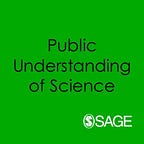The COVID-19 Catastrophe
What’s gone wrong and how to stop it happening again
Review by Alan Irwin
In this book Horton raises a series of key issues and succeeds in conveying the breadth, multi-dimensionality and severity of the crisis.
At a time when so many lives are still being lost to COVID-19, it might seem too early to ask ‘what’s gone wrong?’. As at least one senior government official has argued, we can’t learn any useful lessons while we are still in the middle of a crisis. Shouldn’t we wait before analysing the causes and consequences?
Richard Horton, editor of The Lancet, has little sympathy with the argument for holding back. In a strongly-worded critique of the political response to the COVID-19 crisis, he is actually more concerned by the silence of critical voices and by the absence of challenge. As he presents it on every page, we need to ask difficult questions. We need to explore what good can come from a very bad situation. We need to identify the mistakes made and act upon that awareness. And we need to anticipate (horrible as this might sound) the next pandemic.
The catastrophe at the centre of Horton’s book, written in May 2020, has already grown. However, the main target of his attack is still very recognizable: a lack of leadership in the face of a lethal global challenge; in many countries, ‘the greatest science policy failure for a generation’. The political handling of the crisis in the USA and Britain comes in for particular criticism — with President Trump’s decision to cut WHO funding presented as a crime against humanity. But perhaps the most harrowing testimony comes from workers in the British health service: ‘We feel completely abandoned’, ‘This is playing with lives’, ‘I don’t feel safe. I don’t feel protected.’
In a short and punchy account, Horton works through the decisions that were taken or not taken. Why were we not better prepared? Why do politicians try to attribute blame elsewhere — and to China in particular (whose response Horton generally commends)? Why were the lessons of previous pandemics not taken more seriously? Sometimes Horton’s accusations can seem too much — as in the ‘crime against humanity’ allegation. Some might find his criticisms too broad and his judgements premature. But he certainly raises a series of key issues and succeeds in conveying the breadth, multi-dimensionality and severity of the crisis.
Horton notes both the strong contribution of the international scientific community to our understanding of the virus and also the failures of the policy advisory process. He has particular criticisms of the medical systems in the UK and many Western nations. Drawing upon writers as disparate as Ulrich Beck, Slavoj Žižek, Arundhati Roy, Michel Foucault, Herbert Marcuse and Albert Camus, his case is for a kind of radical pessimism and humility: let us look hard at the worst that can happen and not foolishly assume that human control is absolute.
What does all this mean for research and practice in science communication? Four particular points struck me in Horton’s critique. First of all, we have heard stories before of political systems struggling to act in the face of ‘unknown unknowns’, decisions taken in secrecy and based on unchallenged assumptions, an apparent lack of open engagement with those in the ‘front line’ and a loss of trust in official communications. Given this history, it is hard to be optimistic about the capacity of some political systems to learn from failure.
Secondly, and very importantly, Horton brings out the international differences as well as similarities in the crisis response. It will be crucial for future researchers to keep these differences in mind and not assume that all the world reacted in the same way as the US or UK. Cases such as China, South Korea and Germany deserve just as much attention — and may give us better clues as to how communication can be improved.
Thirdly, there is one key word running through this account: uncertainty. Horton lists question after question. There may be answers in the future. But it is important not to forget just how fundamental uncertainty is to every aspect of this crisis as it is currently experienced. If science communication could help future societies acknowledge — and hopefully deal constructively with — ambiguity, ignorance and complexity, then it would have made a major contribution.
Finally, Horton makes it clear that the crisis is not only about biology but also a matter of politics, economics, governance cultures and life itself. Communicating about crisis is not just about addressing individual actors but also shedding light on how we are to live together in a world of enhanced vigilance and, very likely, surveillance. How, for example, do we balance our personal sense of autonomy against the good of the community as a whole? How do we act when the failures of one healthcare system can have drastic consequences for all nations?
Science communication must operate in a world where we are above all social beings, mutually dependent on each other’s actions, and where disease is not just a pathology of the body but of society as whole.
Alan Irwin is a sociologist and STS (Science and Technology Studies) scholar based at Copenhagen Business School. His books include (with M. Michael) Science, Social Theory and Public Knowledge (Open University Press, 2003). He is the author of a chapter on risk management and science communication in the forthcoming Routledge Handbook of Public Communication of Science and Technology (3rd edition).
